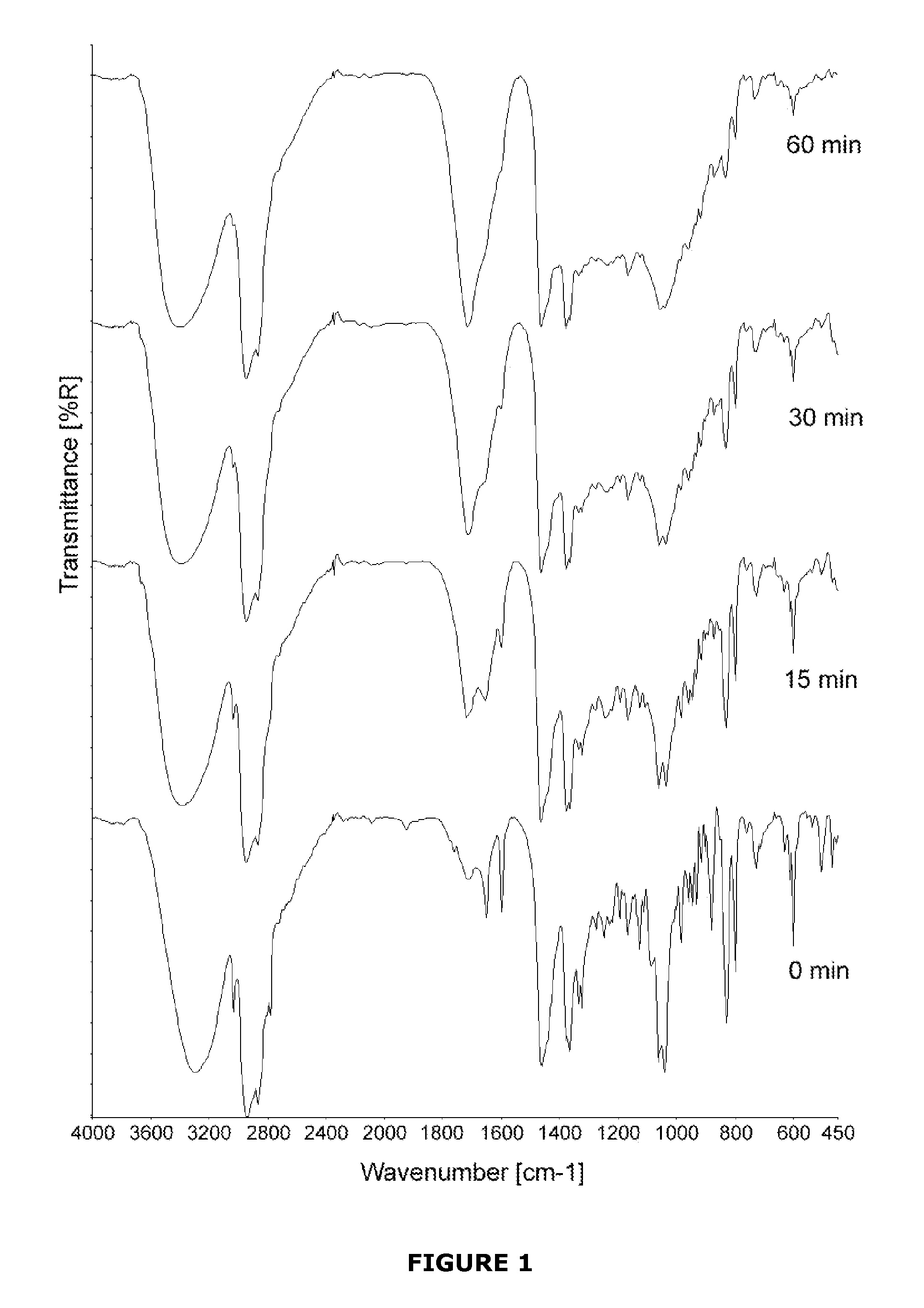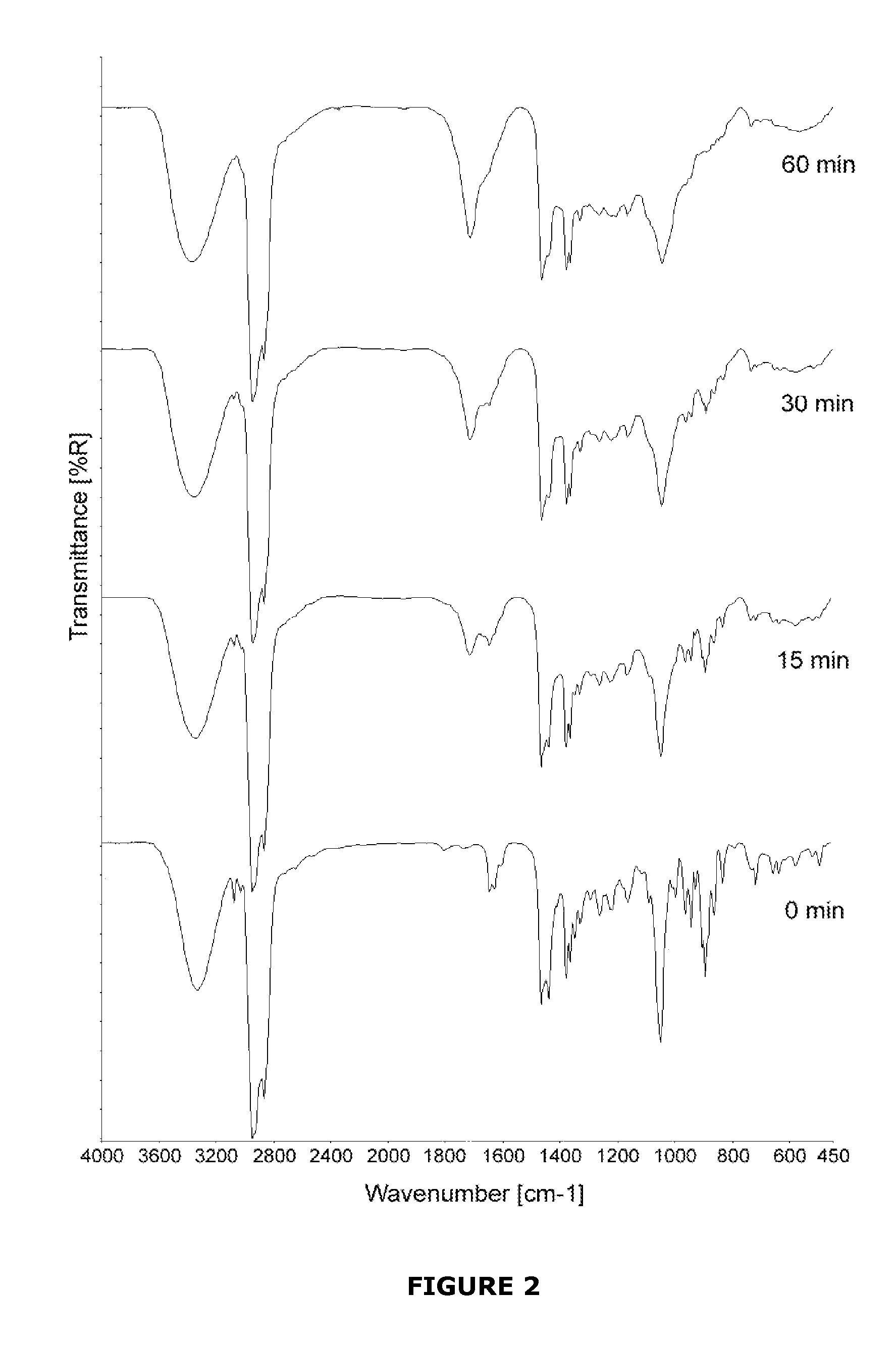Implant modified with non-hydroxylated vitamin d precursors
a technology of vitamin d precursors and implants, which is applied in the field of implants, can solve the problems of no study supporting the same activity of osteoblastic cells with 7-dhc, and the inability to use active vitamin d in bone repair
- Summary
- Abstract
- Description
- Claims
- Application Information
AI Technical Summary
Benefits of technology
Problems solved by technology
Method used
Image
Examples
example 1
Obtaining a UV Irradiated Titanium Implant Treated with 7-DHC
[0054]Titanium (Ti) surfaces were coated with either 7-DHC or cholecalciferol to analyse their transition initiated by UV light. The aim of the studywas showing how specific the UV initiated conversion from 7-DHC to cholecalciferol was and which irradiation time would be the most appropriate.
1.1. Materials and Methods
[0055]7-DHC and cholecalciferol were purchased from Sigma-Aldrich with the highest grade of purity available. Surfaces of Ti (c.p. grade IV) disks, 6.25 mm in diameter, were coated with either 7-DHC or cholecalciferol. The surfaces were dried on air and subsequently irradiated with UV light (λ=302 nm, P=6 W, distance to surfaces 43 mm, lamp purchased from VWR, Oslo, Norway). The samples were analysed with FTIR spectroscopy (DRIFT) after 0 min, 15 min, 30 min, and 60 min of irradiation. An equally irradiated, uncoated Ti disk was used as a background for the FTIR measurements. The spectra obtained by FTIR spect...
example 2
Determination of Effects of UV Irradiation on the Conversion of 7-Dehydrocholesterol (7-DHC) into Biologically Active Vitamin D (1,25-D3) and Changes in Gene Expression of the Key Enzymes Regulating its Hydroxylation, CYP27B1 and CYP27A1
[0059]2.1. Preparation of Irradiated Plastic Surfaces Covered with 7-DHC
[0060]For the treatment with vitamin D metabolites, stock solutions of 2 mM 7-Dehydrocholesterol (7-DHC, Sigma St. Louis, Mo., USA), 2 μM cholecalciferol (D3, Sigma St. Louis, Mo., USA), and 2 μM 25-Hydroxyvitamin D (25-D3, Sigma St. Louis, Mo., USA) were prepared in absolute ethanol and filtered with a 0.22 mm pore size filter before use. Fourteen different groups were prepared; eight were non irradiated: 7-DHC at different doses (20 nmols, 2 nmols, 0.2 nmols, 2×10-2 nmols, and 2×10-3 nmols), 2×10-2 nmols D3, 2×10−2 nmols 25-D3 and ethanol. And six were UV-irradiated: 7-DHC at the same different doses (20 nmols, 2 nmols, 0.2 nmols, 2×10−2 nmols, and 2×10-3 nmols) and ethanol.
[00...
example 3
Measurement of Osteoblast Differentiation end Expression of RANKL Gene on Titanium Implants Coated with 7-DHC and Fotoactivated with UV Light
3.1. Implants and Treatments
[0086]Ti disks made of grade 2 and with a diameter of 6.25 mm and a height of 2 mm were machined from cp Ti rods and subsequently ground, polished, and cleaned. For the surface modification of Ti implants stock solutions of 2 mM 7-dehydrocholesterol (7-DHC, Sigma St. Louis, Mo., USA), 2 μM cholecalciferol (D3, Sigma St. Louis, Mo., USA), and 2 μM 25-hydroxyvitamin D (25-D3, Sigma St. Louis, Mo., USA) were prepared in absolute ethanol and filtered with a 0.22 μm pore size filter before use.
[0087]To treat implant surfaces, 10 μl of each dilution treatment were left on the surfaces and were allowed to air-dry for 15 min in the sterile flow bench. For UV-irradiation, a UV lamp of 302 nm was used at an intensity of irradiation ca. 6 mW / cm2 during several irradiation times.
[0088]Different groups were prepared; (1) non-irr...
PUM
| Property | Measurement | Unit |
|---|---|---|
| time | aaaaa | aaaaa |
| time | aaaaa | aaaaa |
| wavelength | aaaaa | aaaaa |
Abstract
Description
Claims
Application Information
 Login to View More
Login to View More - R&D
- Intellectual Property
- Life Sciences
- Materials
- Tech Scout
- Unparalleled Data Quality
- Higher Quality Content
- 60% Fewer Hallucinations
Browse by: Latest US Patents, China's latest patents, Technical Efficacy Thesaurus, Application Domain, Technology Topic, Popular Technical Reports.
© 2025 PatSnap. All rights reserved.Legal|Privacy policy|Modern Slavery Act Transparency Statement|Sitemap|About US| Contact US: help@patsnap.com



